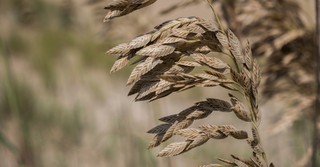What Is the Significance of Wheat and Tares in the Bible?
Share

“Time and truth go hand in hand.”
I’m not sure who originally said this statement, but a pastor friend would quote it often. As a pastor, I learned things only years of ministry will teach you. Sometimes a person would come to a worship service and get excited and jump right in to the congregation and community. I would get inspired and encouraged. But within a short amount of time, the same person would be gone without much of an explanation. Sometimes another person would ask challenging questions, difficult ones, and be hesitant to commit to anything. And yet that person would quietly, over time, be the most consistent and generous member of the church.
It's not a formula either way, and we often have to wait and see how people act over time. True transformation isn’t a short sprint; it’s a marathon. And we often don’t get to see the impact of ministry until years down the road. Maybe decades.
Jesus gave his disciples a parable to reveal this, in part, when he spoke about wheat and tares and what will happen at the end of all time. Matthew’s gospel records this parable for us, and it is still important and relevant today.
Photo credit: ©Getty Images/mycola

Where Does Jesus Talk about Wheat and Tares?
Jesus speaks about the wheat and tares in Matthew 13:24-30. Christ taught a crowd of people in Galilee, around the Sea of Galilee, and his disciples were also there.
In Matthew 13, Jesus starts teaching in stories to reveal different truths regarding the Kingdom of Heaven. Jesus’ parables weren’t easily understood. Those who believed would seek further clarity and continue to believe, no matter the difficulty. Others who would reject Jesus didn’t humble themselves to seek further understanding.
Jesus (nor Paul) gave a simple, academic definition for the Kingdom of God. Since it existed in another realm, human words couldn’t adequately define heaven. But stories contain complexity and depth, even to the eternal. The Kingdom must be entered and seen, not academically defined. Stories invite people to experience an idea, not learn facts. Therefore, Jesus used stories or parables to teach on the Kingdom of God. Some people took the invitation; others didn’t.
The parable of the wheat and tares is the second parable in Matthew 13. Jesus compares the Kingdom of Heaven to a man who sows good seed (in this case, wheat) in his field. During the night, when everyone is asleep, an enemy comes and sows weeds, or tares. These were probably a type of weed that looks like wheat at first but aren’t. When the plants grow, worried servants notice the weeds and ask if they should pull them out. The owner says no. To pull up the weeds would also uproot the good crop, the wheat. Instead, the servants should let them grow together until the final harvest. At that point, the reapers will separate the weeds (tares) from the wheat. The tares will be burned and the wheat gathered into the barn.
Jesus told this parable to reveal both the present and future reality of the Kingdom of God, a sifting that would happen later, just like his parables did in the moment between those who believed in him and those who didn't.
Photo credit: ©Getty Images/Andrey Iudin

What Is the Symbolism of Wheat and Tares?
In Greek, the word for wheat is sitos, and the word for tares is zizania. Zizania probably referred to a darnel, a poisonous weed that looked like wheat as it grows but ends up being toxic. Since the wheat symbolized the righteous and tares the wicked, Jesus makes a point—the difference between the righteous and the wicked isn’t visible right away, but God will reveal their true identity at some point in the future.
To the Jewish audience, wheat would have been a common image in the Bible. The Old Testament often connected wheat to God’s blessing and provision, since they made bread from it, a staple (Psalm 81:16, Joel 2:24). Harvest also symbolized a future judgment, separating the good from the bad (Hosea 6:11). When Jesus spoke of wheat and harvest, he brought in previous spiritual and cultural meanings. Jewish law also forbade sowing two different kinds of seed in a field (Leviticus 19:19). The idea of a person sowing a poisonous weed among life-giving wheat, at night while people slept, pointed to evil and deception.
Gentiles stood among the crowd in Galilee, too. For the Roman world, agriculture and wheat symbolized life, abundance, and civilization. Weeds and wild plants referred to chaos and disorder. Greek writers, like Plato, used farming pictures to teach the need for moral good instead of decay. Jesus’ use of wheat and tares would have had meaning for both Jews and Gentiles. Not everyone who looks righteous really is. God sees the heart.
Photo Credit: ©iStock/Getty Images Plus/Toltek

What Is Jesus' Explanation of the Parable of Wheat and Tares?
Jesus gives a clear explanation of the parable later, in Matthew 36-43. Confused, the disciples approached Jesus and asked for its meaning.
The one who sowed the good seed is the “Son of Man,” a title he used for himself and refers to a Messianic, divine figure in Daniel. The field is the world, Christ says, not the world. God’s kingdom work happens all around the world, and believers grow up with nonbelievers, alongside one another. The good seed represents the children of God, the righteous, and the tares symbolize the children of the evil one, people who live in opposition to God’s rule.
The enemy, or Satan, sowed the poisonous weeds, revealing how the Devil also remains at work. He can’t stop Jesus from sowing, but he’s still allowed to sow lies, confusion, false religion, and outright opposition to God. The harvest symbolizes the “end of the age,” the final judgment. The reapers are angels sent to separate the righteous from the wicked at that point, and not before. AT the judgment, the Son of Man will send the angels. They will reap the whole world, gathering out of the world those who cause sin and chaos. Those will be thrown into the fiery furnace, a symbol of divine judgment consistent in the gospels and Revelation.
In contrast, the angels will gather the righteous, who will shine like the sun in the Father’s kingdom. Jesus promises eternal glory and reward for those who remain faithful.
As he does often, Jesus ends his teaching with, “He who has ears, let him hear.” Christ encourages those who have the ability to actively use it to listen carefully and respond in humility and faith.
Photo credit: ©SparrowStock

What Other Scriptures Teach a Similar Idea to the Parable of Wheat and Tares?
In the Old Testament, Malachi 3:18-4:1 contains a similar idea. Malachi prophesies how God will one day separate the righteous and the wicked, between those who serve God and those who don’t. At the coming day of judgment, the prideful and the unrighteous will be “stubble.” But the righteous will rise with joy and healing. Psalm 1 describes the righteous as a tree planted by water. But the wicked are like chaff, blown away. Chaff isn’t a weed, exactly, but is the outer shell of wheat separated from the useful grain. Finally, Daniel 12:2-3 also predicts the final judgment: some to everlasting, eternal life and others to shame and contempt.
Jesus spoke about the resurrection of the righteous and wicked in John 5:28-29. “Do not marvel at this, for an hour is coming when all who are in tombs will hear his voice and come out—those who have done good to the resurrection of life, and those who have done evil to the resurrection of judgment.” Christ also describes the final separation in another parable in Matthew about sheep and goats. The sheep represent the righteous and the goats represent the wicked. The Son of Man rewards the righteous (sheep) with eternal life and sends the wicked (the goats) to eternal punishment.
Paul writes about a similar idea in 2 Thessalonians 1:6-10, where God will give trouble (harsh punishment) to those who oppress his people and bring glory to faithful believers at his return. In the last book, with visions about the end times, Revelation 14:14-20 uses the same type of imagery. Angels reap the earth—one harvests the righteous and another gathers the grapes of wrath to be crushed.
A day of reckoning is coming. Jesus will return, and God will act with justice to reward the faithful and remove evil from this world to establish his Kingdom. These ideas have incredible meaning for us today.
Photo credit: ©Getty Images/Mikhail Azarov

What Does This Parable Mean for Us Today?
First, the parable reminds us that Jesus is the one who plants us. He sows the good seed, and we are the wheat, the ones who belong to him. Our place and purpose in the world isn’t random or an accident. He intentionally places us where we can grow, even among a wicked world. We live as his future harvest. It all begins with his work, not our own efforts.
Second, like wheat, Jesus plants us to bear fruit and bring life. Wheat becomes nourishment through bread, like Jesus is the bread of life, and we’re meant to bring life to others. Just like God chose Israel to bless the nations, we now continue that mission as God’s people. We grow spiritually for our own sake and to provide grace, love, and truth to the world around us. Our purpose is to glorify God and help others flourish.
Third, tares (or weeds) only take. They grow alongside the wheat, using the same soil, light, and water, but they don’t produce anything good. Instead, they can poison the wheat. We must be sure not to be like the tares, people who take from God, the world, and others without giving life in return. Our faith must lead to generosity and compassion, self-sacrifice to give life. In this, we become like Jesus.
Fourth, Jesus warns us not to condemn prematurely. The servants in the parable were correct, the tares were bad and poisonous, the evidence of the enemy at work. However, they were wrong in their timing. The master said to wait for the harvest. If we try to separate people too soon, we might be wrong, since we only see the outward actions and don’t know the end of the story yet. While people live, there’s hope. In addition, according to Jesus, to condemn prematurely would hurt his work and us. We could judge too harshly too soon, causing spiritual damage and becoming tares in the process. God alone sees the heart and who belongs to him. We must be faithful and fruitful, allowing God to be the Judge.
Lastly, the parable clearly teaches that there will be an end and a separation. This should spur us on to share the gospel with urgency. Part of our role in the world, how Jesus blessed it and so will we, is to share the Gospel of the Kingdom, calling people to repent and be reconciled to God now, while there’s time.
The wheat and tares teaches us to live like true wheat, planted with a purpose to grow and give life to others. God will use us to feed and bless the world around us, wherever he has placed us.
Photo Credit: ©iStock/Getty Images Plus/Bohdan Bevz
